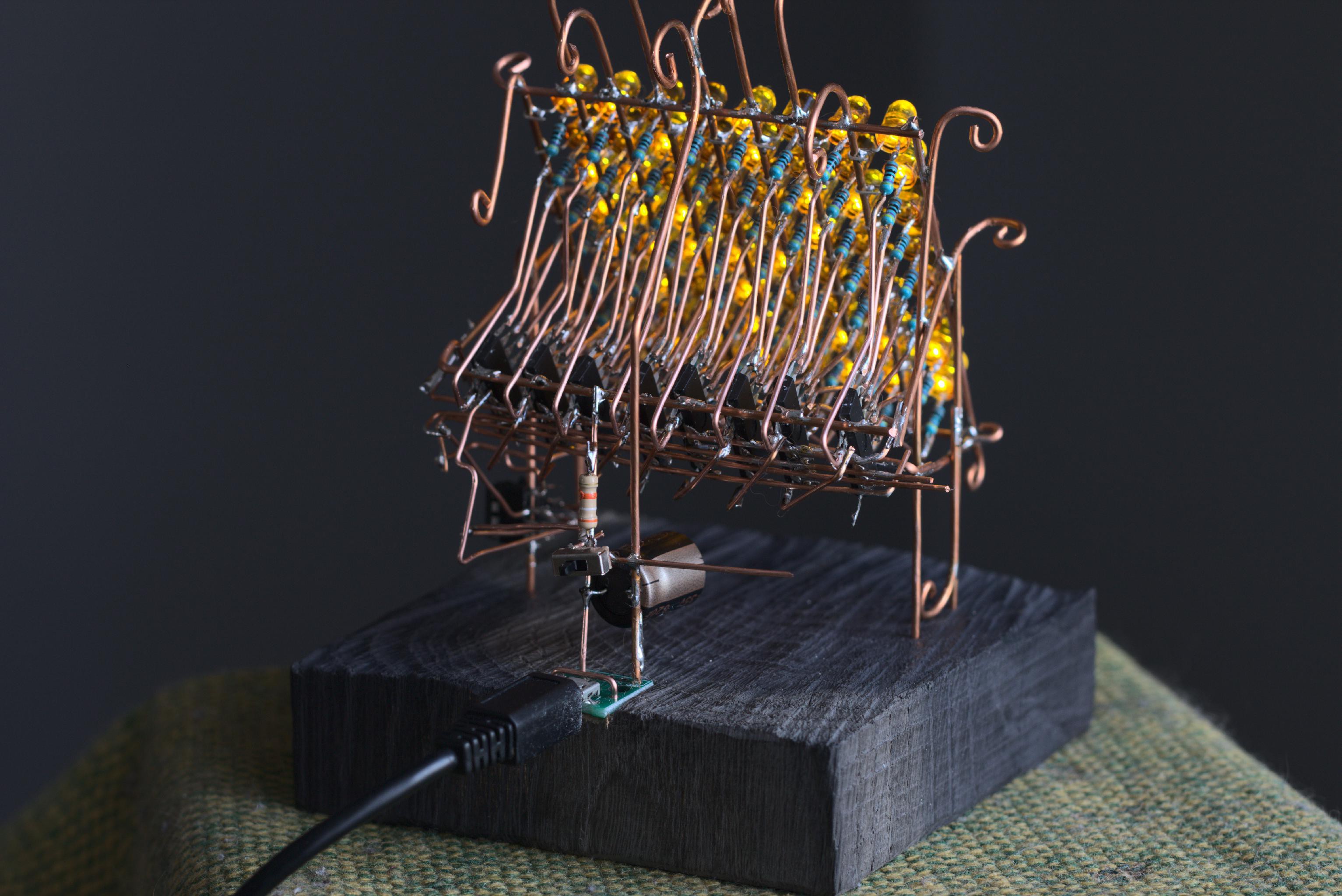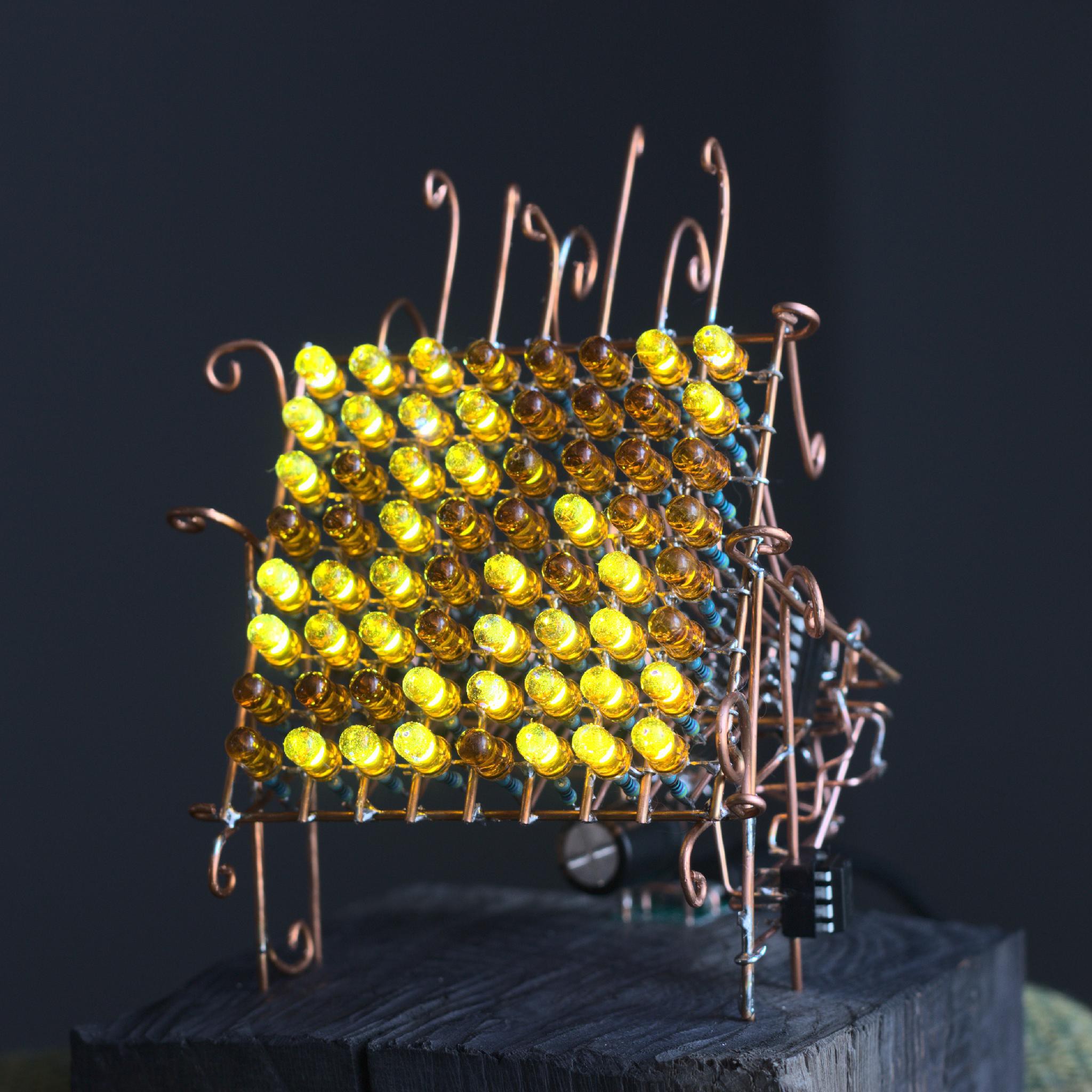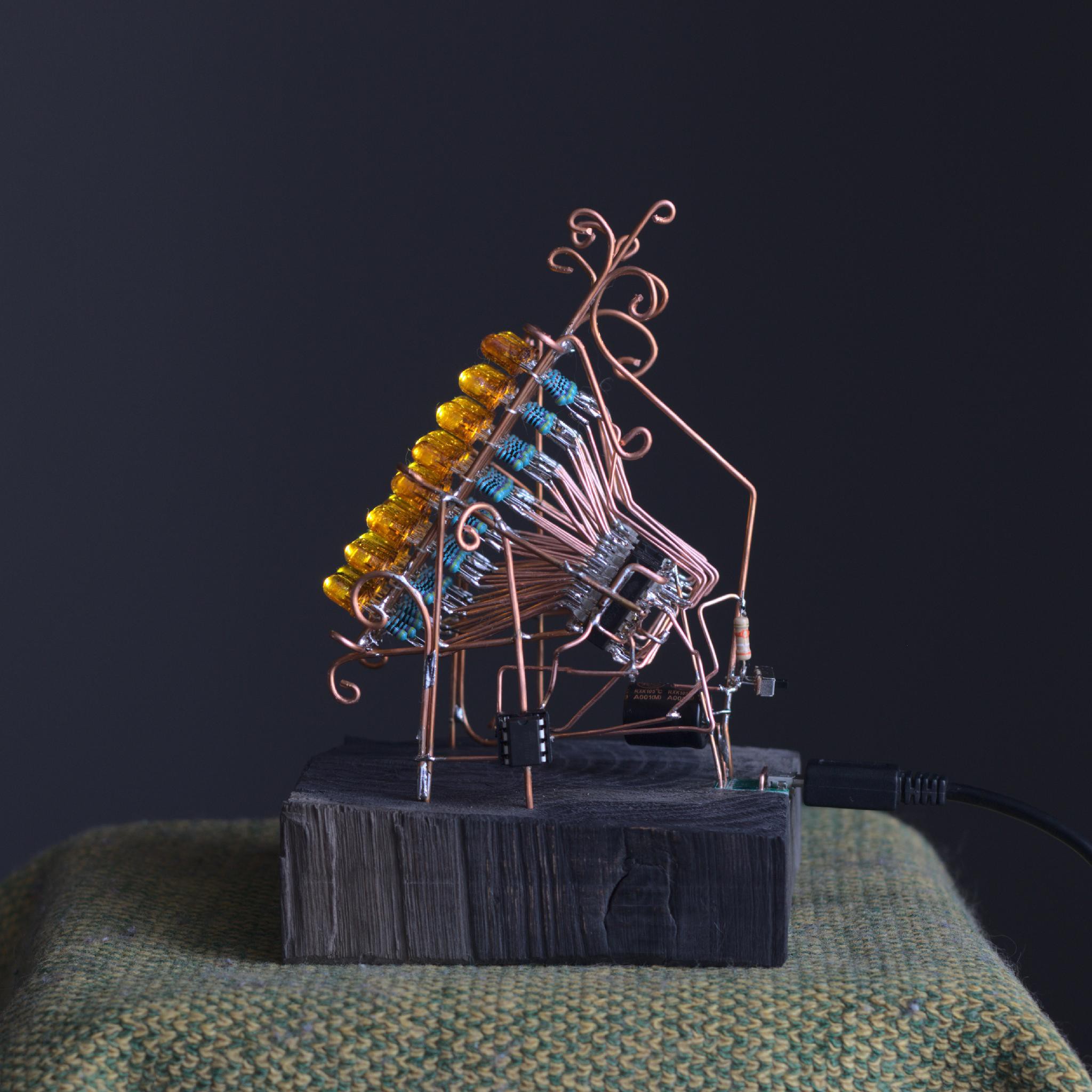It has two modes: random flashy matrix and binary counter clock. It counts 64-bit number. You can calculate how many years it takes to reach the end. So, I think, that it is better to call it God's clock.
The LEDs was originally clear transparent. I used glass colours to paint them. Diffused yellow LEDs would be best to use.



Random mode:
#include <Arduino.h>
#include <avr/io.h>
#include <util/delay.h>
/*******************************
*
* Tauno Erik
* 02.05.2020
*
ATtiny13-----------------------------------
NC PB5 - 1 U 8 - +5V
KEY0 ADC3 PB3 - 2 7 - PB2 ADC1 NC
KEY1 ADC4 PB4 - 3 6 - PB1 OC0B LAMP PWM2
GND - 4___5 - PB0 OC0A LAMP PWM1
74HC595------------------------------------
Q1 - 1 u 16 - VCC
Q2 - 2 15 - Q0
Q3 - 3 14 - DS Serial DATA input
Q4 - 4 13 - OE Output enable (Active low - conect to GND)
Q5 - 5 12 - ST_CP Storage register clock pin - LATCH pin
Q6 - 6 11 - SH_CP Shift Register CLOCK Pin
Q7 - 7 10 - MR Master Reset (Actice low - it resets when low, keep it high)
GND - 8___9 - Serial Out
Circuit: ATtiny13 controlling a 8*74HC595 hooked to 8 LED's with 470ohm resistors
********************************/
/* Pins */
const uint8_t DATA_PIN = 4;
const uint8_t CLOCK_PIN = 3;
const uint8_t LATCH_PIN = 2;
const uint8_t BUTTON_PIN = 1;
/* */
const uint8_t NUM_OF_SR = 8;
uint8_t rows[NUM_OF_SR]{0}; // 8
uint8_t prev = 0;
/************************************************************/
void shiftOut(int myDataPin, int myClockPin, byte myDataOut)
{
int i = 0;
int pinState = 0;
//clear everything out just in case to
//prepare shift register for bit shifting
digitalWrite(myDataPin, 0);
digitalWrite(myClockPin, 0);
for (i=7; i>=0; i--) {
digitalWrite(myClockPin, 0);
//if the value passed to myDataOut and a bitmask result
// true then... so if we are at i=6 and our value is
// %11010100 it would the code compares it to %01000000
// and proceeds to set pinState to 1.
if ( myDataOut & (1<<i) ) {
pinState= 1;
}
else {
pinState= 0;
}
digitalWrite(myDataPin, pinState);
digitalWrite(myClockPin, 1);
digitalWrite(myDataPin, 0);
}
digitalWrite(myClockPin, 0); // stop shifting
}
/***************************************/
void binary_counter(uint8_t delay_time)
{
for (uint8_t i = 0; i < NUM_OF_SR; i++)
{
prev = rows[i];
if (prev == 255){
rows[i] = 0;
}
else{
rows[i]++;
i = 8;
}
}
digitalWrite(LATCH_PIN, 0);
for (uint8_t k = NUM_OF_SR; k > 0; k--)
{
shiftOut(DATA_PIN, CLOCK_PIN, rows[k-1]);
}
digitalWrite(LATCH_PIN, 1);
delay(delay_time);
}
/************************************************************/
void random_generator(uint8_t delay_time)
{
for (uint8_t i = 0; i < NUM_OF_SR; i++)
{
rows[i] = random(255);
}
digitalWrite(LATCH_PIN, 0);
for (uint8_t k = NUM_OF_SR; k > 0; k--)
{
shiftOut(DATA_PIN, CLOCK_PIN, rows[k-1]);
}
digitalWrite(LATCH_PIN, 1);
delay(delay_time);
}
/************************************************************/
int main(void)
{
pinMode(LATCH_PIN, OUTPUT);
pinMode(CLOCK_PIN, OUTPUT);
pinMode(DATA_PIN, OUTPUT);
pinMode(BUTTON_PIN, INPUT);
// if analog input pin 0 is unconnected, random analog
// noise will cause the call to randomSeed() to generate
// different seed numbers each time the sketch runs.
// randomSeed() will then shuffle the random function.
randomSeed(analogRead(0));
while (1)
{
//read pin PB1
if (PINB & (1<<BUTTON_PIN)) // Low
{
random_generator(100);
}
else // High
{
binary_counter(10);
}
}
return 0;
}
 Tauno Erik
Tauno Erik










It's 584 942 417 355.072 years.
really a God's Clock ...